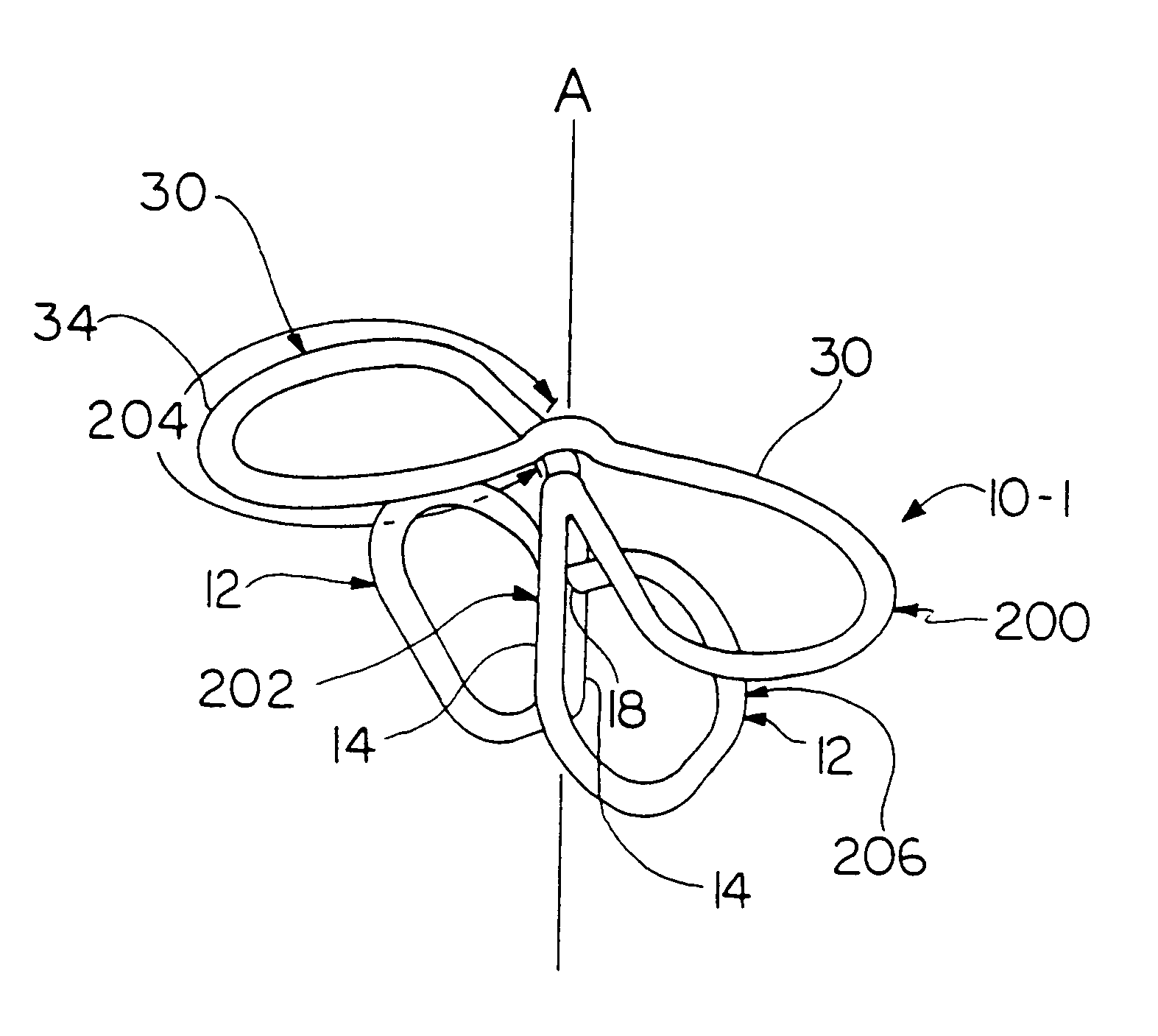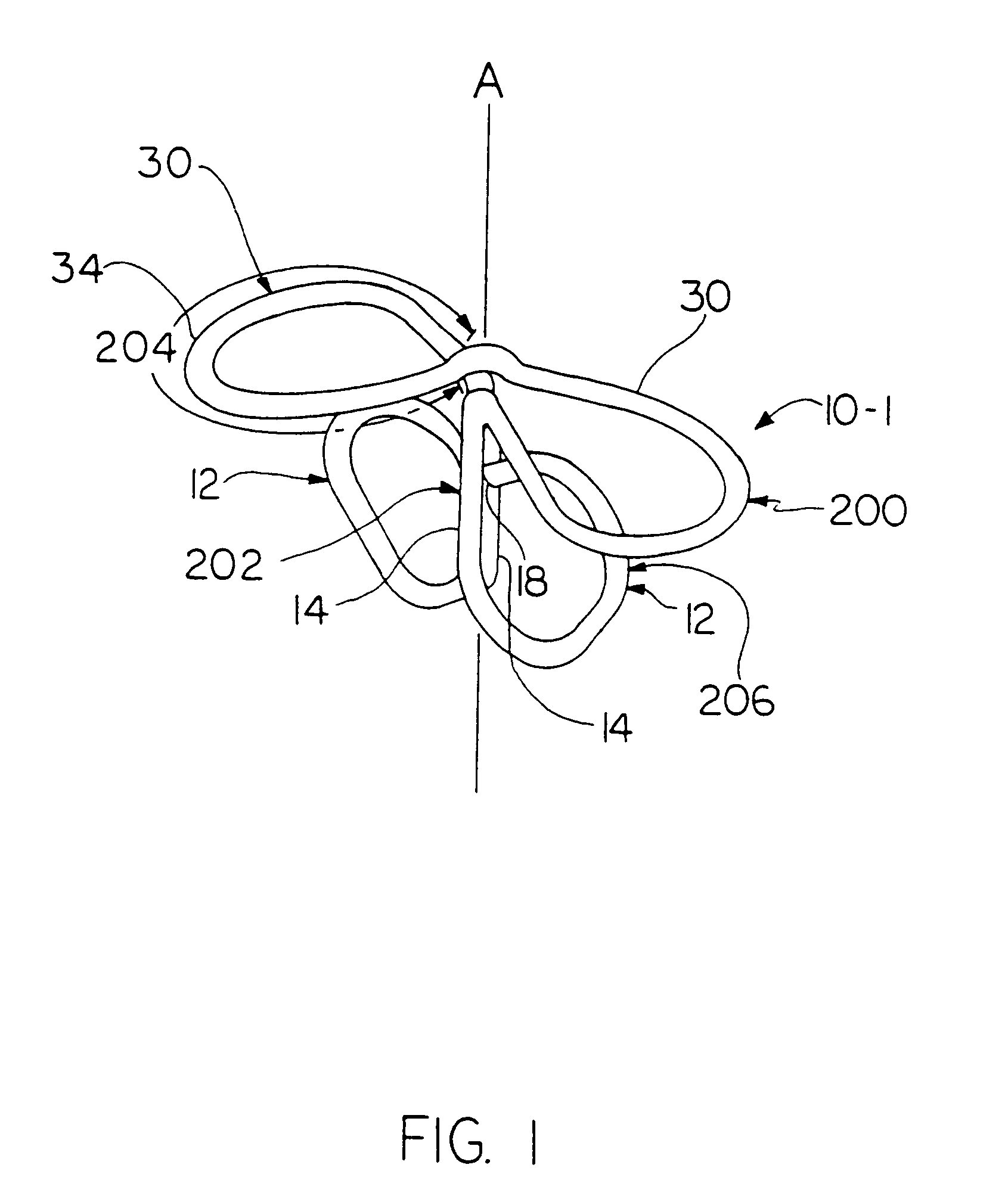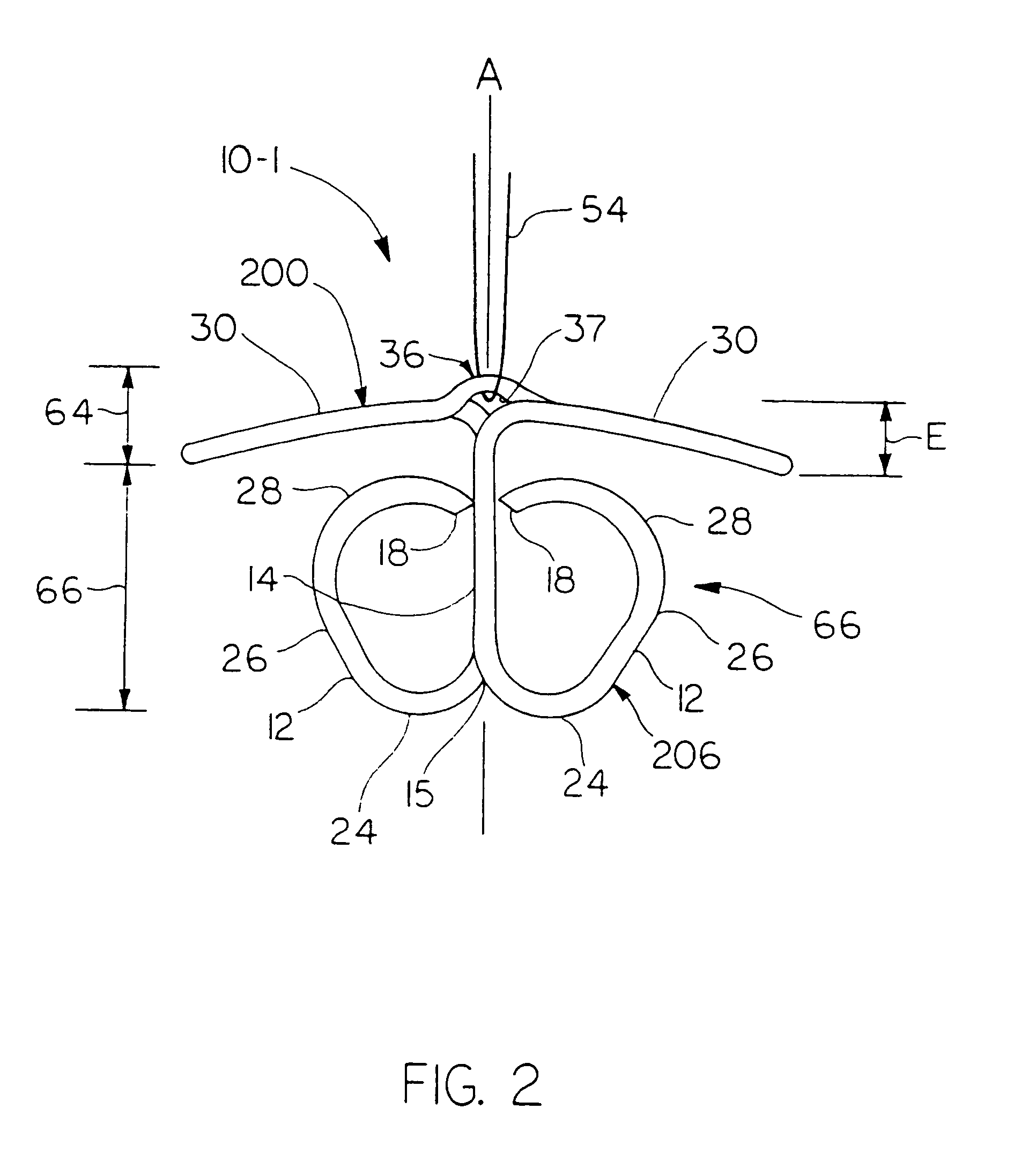Vascular closure
a technology of vascular closure and aperture, which is applied in the field of methods and apparatus for closing apertures, can solve the problems of increasing the time for surgical procedures as well as the overall cost of procedures, affecting the safety of patients, so as to achieve the effect of improving patient safety, overcoming disadvantages, and high sensitivity to the location of the apparatus
- Summary
- Abstract
- Description
- Claims
- Application Information
AI Technical Summary
Benefits of technology
Problems solved by technology
Method used
Image
Examples
first embodiment
[0080]In the first embodiment in which the clip is designated generally 10-1 a central portion 14 leads into a pair of upper horizontally extending side arms 30 and into two lower elongated strand portions 12 that function to at least contact and preferably pierce the vessel wall and close the aperture.
[0081]Referring to FIGS. 1 through 5, 13 and 14, clip 10-1 for closing an aperture in a vessel includes a first portion 200 forming an arc. A second portion 202 extends transversely from first portion 200 relative to the arc where the arc is designated generally 204 in the drawings. A third portion 206 extends from second portion 202 remotely from first portion 200 and curves progressively, relative to second portion 202, initially towards first portion 200 and then towards second portion 202. A tip 18 of third portion 206 is adapted for piercing and retaining tissue encountered thereby.
[0082]In the drawings and particularly in FIG. 13 it is seen that second portion 202 embraces centr...
third embodiment
[0122]Referring to FIGS. 20 and 21, a tissue closure clip manifesting aspects of the invention is designated generally 10-3 and preferably includes a plurality of elongated strands, where the individual strands are designated generally 12-3 in FIGS. 20 and 21. Strands 12-3 may be single filaments or may be woven or braided or other arrangements of multiple sinuous members. Each elongated strand 12-3 preferably has a central portion and two (2) extremity portions extending in either direction from the central portion. Individual central portions of the elongated strands 12-3 are designated 14-3 while extremity portions of each elongated strand 12-3 are designated 16-3. Each extremity portion 16-3 terminates in a tip, where the tips of individual extremity portions are individually designated 18-3. Each tip 18-3 of an extremity portion 16-3 is shaped to retain tissue about the periphery of an aperture, which tissue is encountered by a tip 18-3 of tissue closure clip 10-3 as clip 10-3 ...
fourth embodiment
[0140]Referring to FIG. 28 illustrating a clip manifesting the invention where the clip is designated generally 10-4, clip 10-4 is preferably fabricated with an angle between vertical axis A and a line parallel with upwardly extending central segment 26-4 of third portion 204 equal to about thirty degrees (30°) where this angle is indicated by indicator AA in FIG. 28. Clip 10-4 is fabricated preferably with space between first portion 200-4 and the vertically upper extremity of third portion 206-4, designated by dimensional indicator BB in FIG. 28, being about 0.037 inches.
[0141]Clip 10-4 is further preferably fabricated with the radii of the arcs defining transition portion 24-4 between second portion 202-4 and forming the transition thereof into third portion 206-4 is formed preferably having a radius of about 0.048 inches as indicated by arrow CC in FIG. 28 and with transition 28-4 between the central part of third portion 206 and tip 18-4 being formed on a radius of about 0.063 ...
PUM
 Login to View More
Login to View More Abstract
Description
Claims
Application Information
 Login to View More
Login to View More - R&D
- Intellectual Property
- Life Sciences
- Materials
- Tech Scout
- Unparalleled Data Quality
- Higher Quality Content
- 60% Fewer Hallucinations
Browse by: Latest US Patents, China's latest patents, Technical Efficacy Thesaurus, Application Domain, Technology Topic, Popular Technical Reports.
© 2025 PatSnap. All rights reserved.Legal|Privacy policy|Modern Slavery Act Transparency Statement|Sitemap|About US| Contact US: help@patsnap.com



